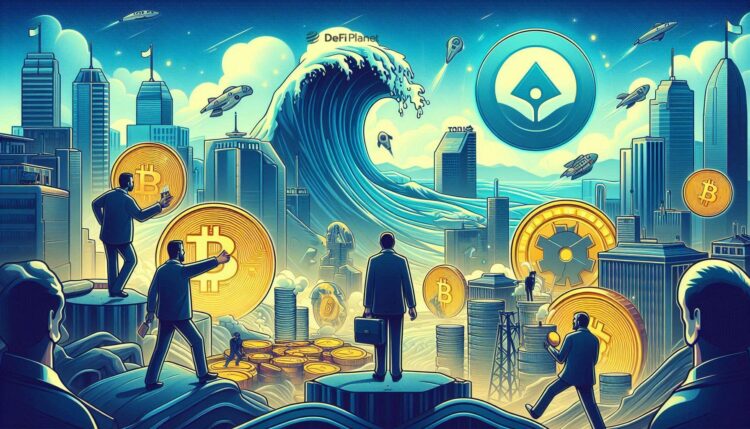Innovation in the financial sector has always made it simpler and more accessible for everyone. Every successful one has broken down barriers and provided people with more opportunities.
In 1924, mutual funds allowed individuals to pool resources and invest collectively, democratizing investment. By 1950, the Diners Club card pioneered the credit card industry and drastically reduced the need for carrying physical cash. In 1975, discount brokerages made stock trading affordable for regular investors, and the 1990s ushered in online banking, granting people—especially those in remote areas—easier access to financial services.
Each of these innovations started as niche solutions before gaining mainstream acceptance. Today, digital tokens appear to be on a similar trajectory.
Tokens are simply secure & digital representations (or equivalents) of value, whether it’s stocks, art, or intellectual property. They’re accessible to anyone online and can be transferred globally without traditional intermediaries like banks or brokers. As of early April 2024, there were over 2.52 million tokens in existence, with an average of 5,300 new tokens created each day.

With their global reach and versatility, tokens could be the next big step in finance. But can they truly lead the next wave of financial innovation?
Why Tokens Could Lead the Next Wave of Financial Innovation
Tokens are more than just a novel addition to finance; they signal a potential paradigm shift. Their programmability allows them to represent a diverse array of assets, from real estate and stocks to intellectual property, making finance more inclusive and dynamic. This opens doors for billions without access to traditional financial markets.
This shift is already happening with the growing use of tokenized dollars, or stablecoins, like USDC and USDT. These digital tokens make it easier for users to hold and move value in dollars, which they can use in different financial activities like trading, lending, or investing in new ventures.
Stablecoins are also reshaping finance in developing economies and regions with large unbanked populations. For example, in Africa’s growing crypto economy, stablecoins make up 43% of the region’s total transaction volume. In 2023 alone, stablecoins facilitated over $2.3 trillion in transactions, including peer-to-peer transfers and remittances, and by September 2024, their circulating supply had reached $180 billion, giving billions a simple way to own and transact in dollars.

Tokenization is also creating entirely new markets; Real-World Assets (RWAs) and Non-Fungible Tokens (NFTs) are great examples. RWAs are digital tokens representing tangible assets like property and commodities, as well as financial products. This digitization of ownership makes the market more efficient and also creates new opportunities, like fractional ownership. Interested investors can now own parts of these assets. That quite difficult to do before now. Platforms like RealT enable users to buy tokens representing shares of real estate properties. The tokenized RWA market is currently valued at $11.5 billion.
NFTs, which started mainly as digital art and collectable items, have grown to include other assets like intellectual property, music royalties, and special access passes. Platforms like Royal allow individuals to invest in music royalties through NFTs linked to songs or albums. The NFT market, valued at $35.7 billion as of November 2024, is expected to reach $407.7 billion by 2034.
Challenges That Must Be Overcomed
These examples highlight how tokens are broadening access to financial markets and creating new economic opportunities, positioning them as the next successful financial innovation. However, there also are serious challenges that could prevent that future from materializing.
One major issue is the lack of clear rules and regulations. Governments around the world are still trying to figure out how to classify and regulate tokens. This uncertainty can make people nervous about investing in them. If potential investors and businesses don’t understand the legal implications, they may hesitate to get involved with tokens.
Another concern is security. The world of tokens has experienced numerous scams and hacks that have undermined people’s trust. A notable example is the collapse of TerraUSD (UST), an algorithmic stablecoin. The decentralized nature of tokens often makes it challenging to hold parties accountable in the event of breaches.
Also, many tokens rely on blockchain networks like Ethereum, which struggle with scalability issues such as high transaction fees and slow processing during peak demand. These limitations hinder tokens’ practicality for everyday transactions. For tokens to gain mainstream acceptance, these networks must deliver faster, more cost-effective solutions.
Lastly, traditional banks and financial institutions already have established trust and systems. Token issuers need to prove their products are better than existing financial products to win over consumers.
The challenges facing tokens are significant, but their potential to democratize finance and reshape markets is undeniable. If regulatory clarity improves, security strengthens, and technical limitations are addressed, tokens could usher in a new era of financial accessibility and innovation. However, whether they lead the next wave of financial innovation depends on their ability to overcome these obstacles and fulfill their promise of inclusivity and efficiency.
Disclaimer: This article is intended solely for informational purposes and should not be considered trading or investment advice. Nothing herein should be construed as financial, legal, or tax advice. Trading or investing in cryptocurrencies carries a considerable risk of financial loss. Always conduct due diligence.
If you would like to read more market analyses like this, visit DeFi Planet and follow us on Twitter, LinkedIn, Facebook, Instagram, and CoinMarketCap Community.
Take control of your crypto portfolio with MARKETS PRO, DeFi Planet’s suite of analytics tools.”





















